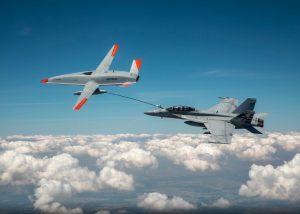
NATIONAL HARBOR, Md. -- The Navy plans to establish two MQ-25A Stingray unmanned carrier-based tanker squadrons to deploy detachments to aircraft carriers and will next conduct a test refuel on an E-2 Hawkeye early warning aircraft. Later this year the Navy plans to standup the MQ-25A fleet replacement squadron VUQ-10 to start training operators and maintainers of the aircraft, Capt. Chad Reed, program manager of Unmanned Carrier Aviation, of PMA-268, said Monday during the Navy League’s 2021 Sea Air Space…

 By
By 











